Part of the fascination of shortline railroads is that they often rostered “unique” one-off or homebuilt equipment. The Susquehanna & New York Railroad was no different in this regard. Among the SNY’s unique equipment is baggage-passenger car #206, a car with a very singular, and tragic, history.
In 1925-26, the SNY was the testing ground for an experimental type of gas-powered mechanically-driven passenger and baggage motor-car built by the Smalley Rail Car Company, of Davenport Iowa. By the early 1920’s, railroads were already losing passengers, and money, to new-fangled automobiles like the Model-T Ford. Railroads sought to save money by using motor-cars, rather than dedicated steam locomotive powered trains, on lightly-patronized branchlines. Motor cars could be run with just 2 or 3 crew members, rather than a complete crew of 5 that a regular train would require; and gasoline engines had improved to the point where operating and maintenance savings could be realized over the operational costs of labor- and maintenance-intensive steam engines.
The SNY, probably hoping such savings could be applied to their bottom line, took delivery of the Smalley car in 1925:
(Article PDF courtesy Charlie Marvin)
The motor-car was tested for a time on the SNY, with adjustments being made as necessary by the inventor, a Mr. Smalley. One day, while awaiting orders at Marsh Hill, Mr. Smalley climbed onto the roof of the car to make some inspection or adjustment to the exhaust. Unfortunately, he was subsequently knocked or fell from the car, and died of his injuries.
The SNY was later given the car, sans motors, as compensation for removing and shipping the gasoline engines back to Davenport. The SNY then numbered the car as combination baggage and passenger car 206, and used it as a standard car in regular service. The (former) motor-car is not listed on the 1926 ORER, but is listed on the 1938 and 1940 ORER with that number.
Here is the car in regular passenger/baggage service at the Lehigh Valley station in Towanda. Note the front of the car when it was motorized is now the rear, with marker lights hung.
This is a view of the interior of the car, occupied by (presumably) a crew member who does seem to appreciate being photographed. The car had a capacity of 50 passengers and a 19’8″ long baggage compartment. The region served by the SNY being so sparsely populated, I doubt the car ever carried more than a handful of passengers at any one time during its entire career.
Above is an excellent view of #206 provided by Charlie Marvin, taken at Newberry, PA July 5th, 1941. The large building in the distance (which still exists) is a portion of the Armour Leather Company complex in West Williamsport, PA.
Finally, another photo of #206 in service, here trailing ten-wheeler 119 at Towanda. The Lehigh Valley station is in the background, and to the left is the stone former LV enginehouse.
After the demise of the SNY in 1942, #206 was sold to the Live Oak, Perry & Gulf, a shortline railroad in Florida. I have no information as to the car’s disposition after that.
Update 11/22/2016: Link to an excellent description of #206 during it’s time of service on the LOP&G, including a couple of photos (scroll down a bit on the page): LOP&G #206.
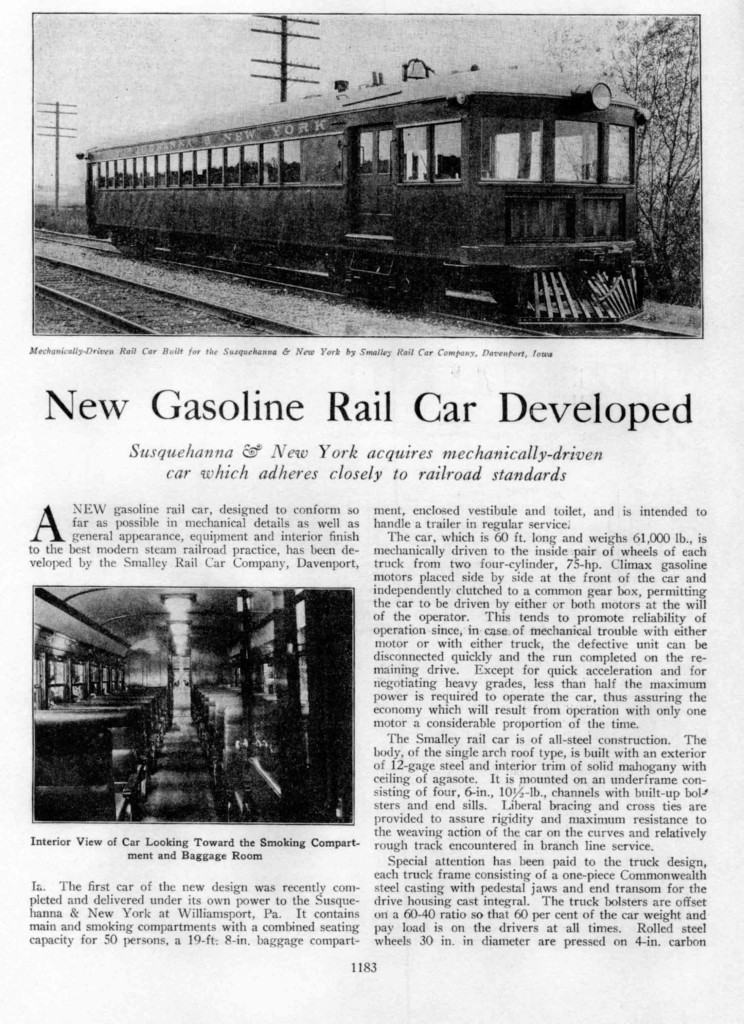
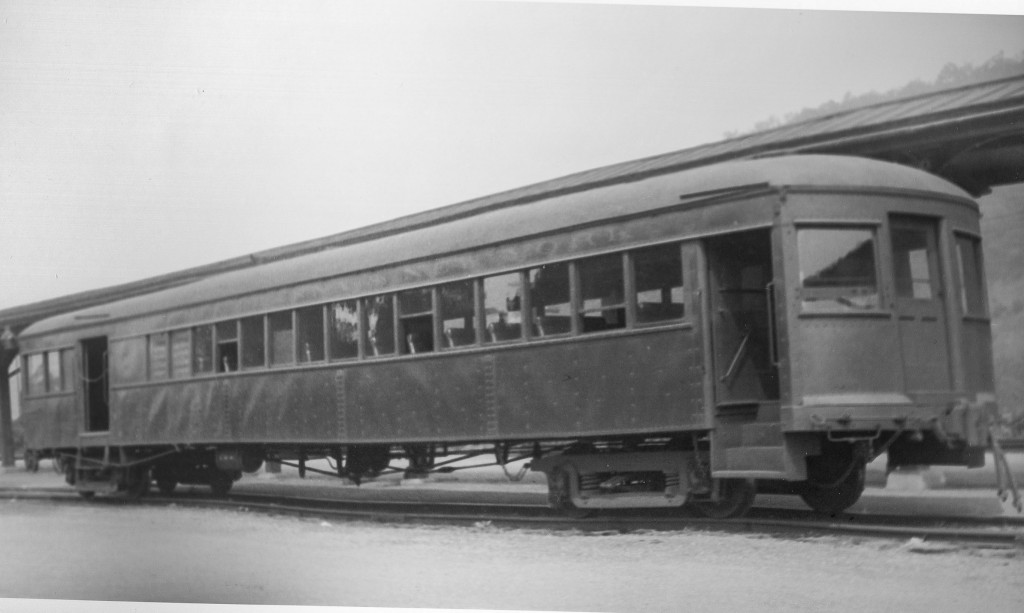
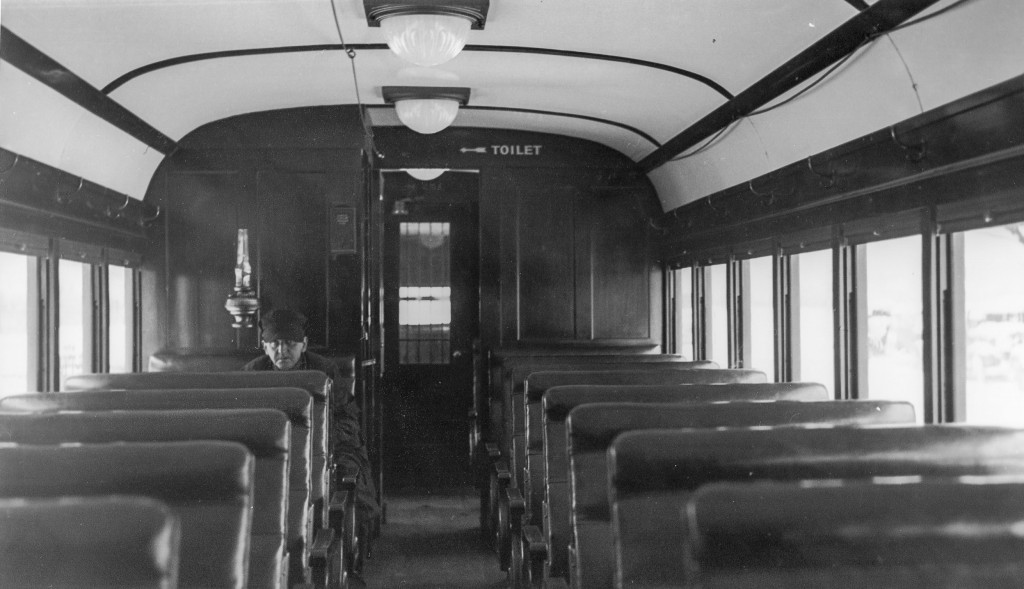
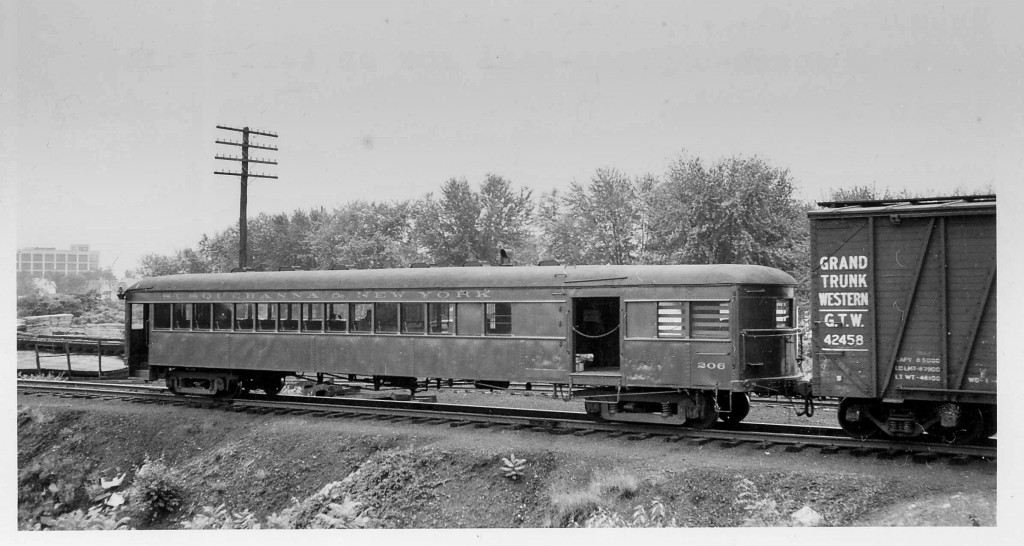
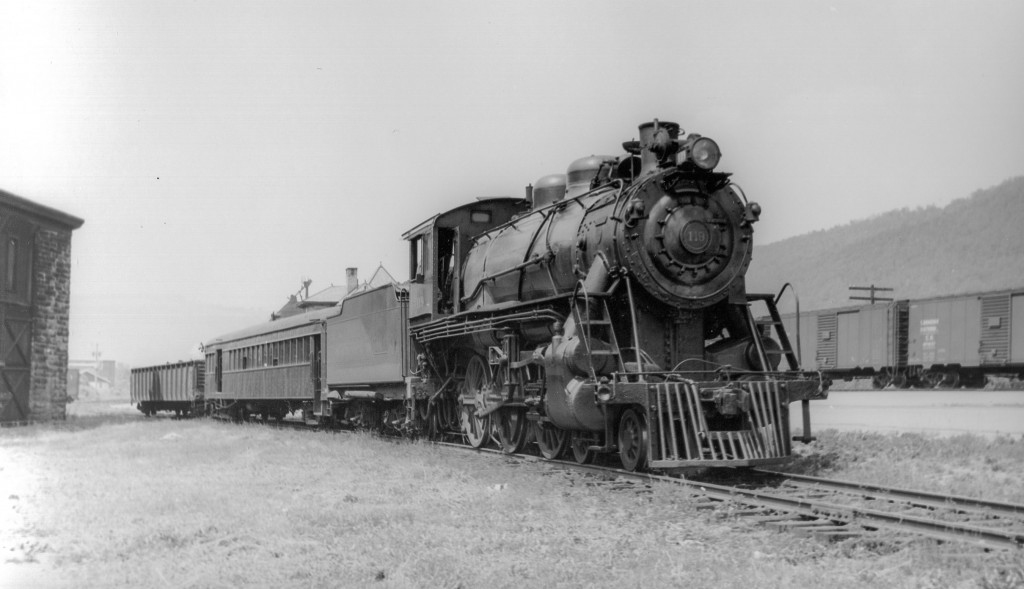
Recent Comments